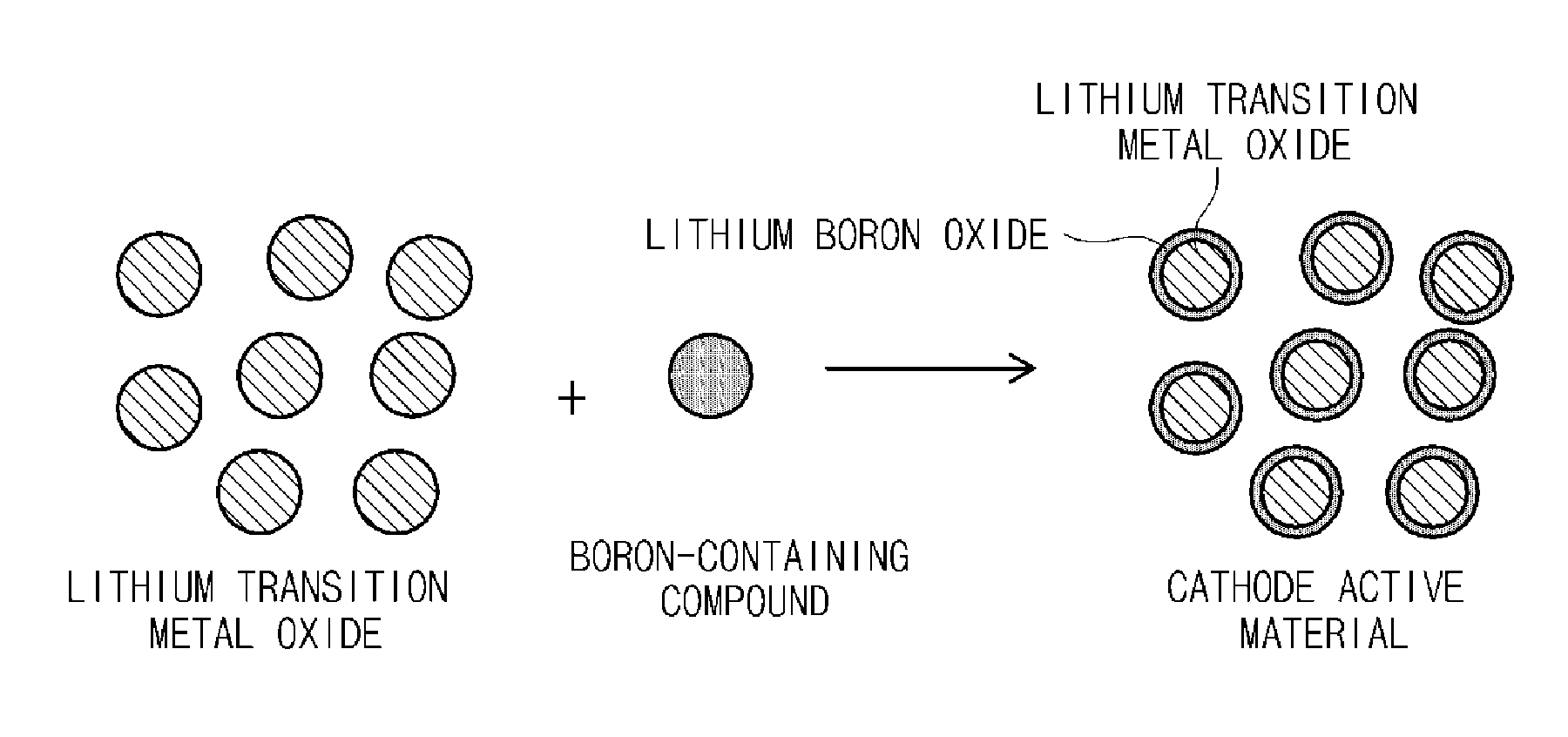Manufacturing method of cathode active material, and cathode active material for lithium secondary battery manufactured thereby
a lithium secondary battery and active material technology, which is applied in the manufacture of positive electrodes, cell components, electrode manufacturing processes, etc., can solve the problems of lithium secondary batteries with limitations, the above limitations are more severe, and the lifetime of lithium secondary batteries rapidly decreases, so as to facilitate the transformation of lithium
- Summary
- Abstract
- Description
- Claims
- Application Information
AI Technical Summary
Benefits of technology
Problems solved by technology
Method used
Image
Examples
example 1
[0080]MOOH (m=Ni0.78Mn0.11Co0.11) was used as a mixed transition metal precursor, the mixed transition metal precursor and Li2CO3 were mixed at a stoichiometric ratio (Li:M=1.00:1), and LiNi0.78Mn0.11CO0.11O2 was prepared by sintering the mixture in a temperature range of about 800° C. to about 900° C. for 10 hours in air.
[0081]LiNi0.78Mn0.11CO0.11O2 and H3BO3 were weighed at a weight ratio of 100:0.17 and mixed with a dry mixer (CYCLOMIX, HOSOKAWA Micron Corporation) to obtain mixed powder. The powder thus obtained was heat treated at 150° C. for 5 hours in an oxygen atmosphere. A cathode active material including LiBO2 and Li2B4O7 in the surface of LiNi0.78Mn0.11CO0.11O2 was obtained by the above method. A thickness of the coating layer was 150 nm.
example 2
[0082]A cathode active material was prepared in the same manner as in Example 1 except that LiNi0.78Mn0.11CO0.11O2 and H3BO3 were used at a weight ratio of 100:0.34.
[0083]In the cathode active material, a thickness of the coating layer was 230 nm.
example 3
[0084]A cathode active material was prepared in the same manner as in Example 1 except that LiN0.78Mn0.11Co0.11O2 and H3BO3 were used at a weight ratio of 100:0.68.
[0085]In the cathode active material, a thickness of the coating layer was 300 nm.
PUM
| Property | Measurement | Unit |
|---|---|---|
| temperature | aaaaa | aaaaa |
| temperature | aaaaa | aaaaa |
| thickness | aaaaa | aaaaa |
Abstract
Description
Claims
Application Information
 Login to View More
Login to View More - R&D
- Intellectual Property
- Life Sciences
- Materials
- Tech Scout
- Unparalleled Data Quality
- Higher Quality Content
- 60% Fewer Hallucinations
Browse by: Latest US Patents, China's latest patents, Technical Efficacy Thesaurus, Application Domain, Technology Topic, Popular Technical Reports.
© 2025 PatSnap. All rights reserved.Legal|Privacy policy|Modern Slavery Act Transparency Statement|Sitemap|About US| Contact US: help@patsnap.com



